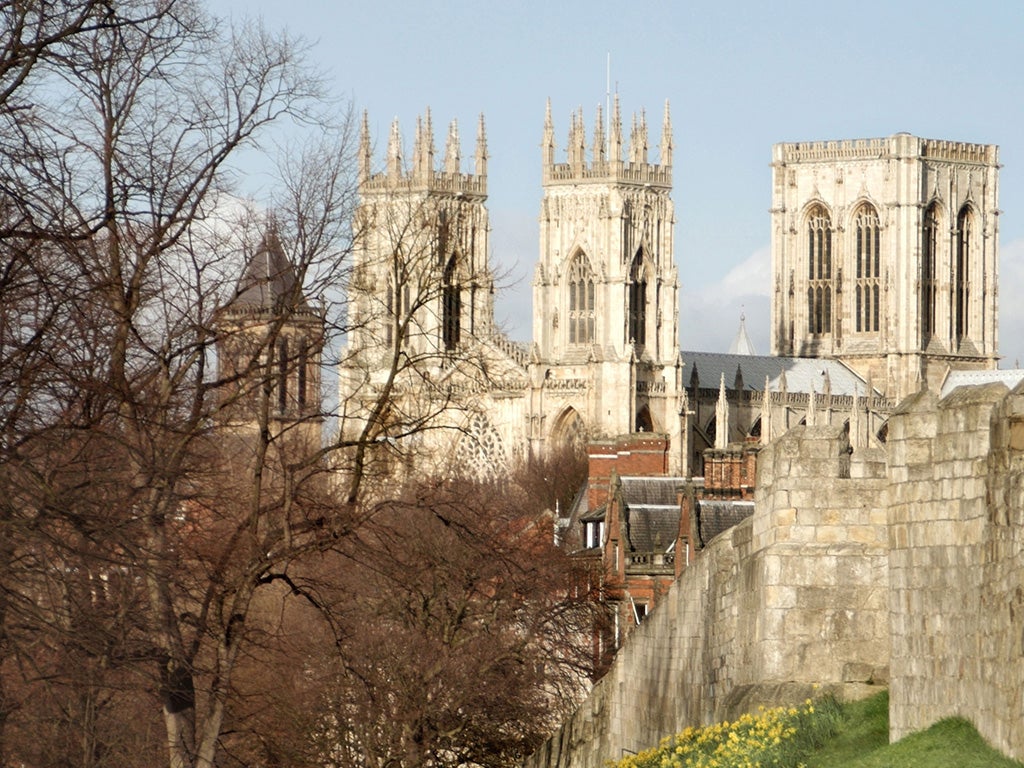Step into the Pulpit at York Minster
When was the last time you had a first time.....?

Every hour on the hour, the duty chaplain in black hat and cloak climbs into a pulpit in the vast nave of York Minster, taps the microphone and conducts a short prayer of thanksgiving that echoes round the mighty church. When he’s finished the organist resumes his practise and clergy, lay people and visitors continue on their way. It’s a small reminder that as well as a tourist attraction with a million visitors a year, York Minster is also a place of worship, a church that was dedicated to St Peter nearly 1500 years ago.
The biggest Gothic cathedral in northern Europe began in 607 with a little wooden church used for the baptism of King Edwin of Northumbria. The Norman Minster was completed in 1100 the remains of which can be seen in the Undercroft, and the Gothic Minster with its arches and steeples was completed in 1253.
The Minster is as vast as it is old. The nave is 100 feet wide, the Central Tower 230 ft high. It took 250 years to build and contains the biggest collection of medieval stained glass in the world, some 20 million pieces. No wonder early pilgrims stood in awe before it, and as no building before or since, has been allowed to stand higher, they like us, would have been able to see it from miles around.
You can judge its awesomeness by climbing the Central Tower. Be warned, it’s not for the faint-hearted with its 275 winding steps but it gets you up close to the gargoyles and the pinnacles and gives an unrivalled view of the city, its snickets and ginnels, its pantiled rooftops and cobbled lanes and on a clear day, to the hills and dales beyond the Vale of York.
Back on the ground make your own discoveries or join a Volunteer Guide (free with your entrance fee) for one of the tours that take place on the hour between 10am and 3pm. They provide not only a walk through history but a wealth of fascinating detail like the apocryphal tale of the Semaphore Saints, modern statues which spell out ‘Christ is here’ but which were dismantled for a film shoot and put back incorrectly to read ‘Chris is there.’.
They will recall the fire of 1829 when poor, mad Jonathan Martin set fire to the Minster believing he was being given a message by God and again in 1984, when, in what insurers call ‘An Act of God’, the Minster was stuck by lightening. The fire destroyed most of the roof and took four years and some 200 oak trees to repair. You would never know it, apart from some giveaway 20th century ceiling bosses designed by winners of a Blue Peter competition. The buttoned-up Victorians carried out a bit of boss redesign too replacing a breast-fed baby Jesus with a bottle, though you’ll need binoculars to spot it.
The Chapter House, a meeting room for the Dean and Chapter is a must-see. Built without a central column, but with cross beams carved from three giant oaks, it is held up like a great upturned umbrella. As well as carvings and stained glass test the acoustics which allow for clearer sound round the perimeter than the centre.
The stained glass of York Minster is world-class whether it’s the Great West Window with the ‘Heart of Yorkshire’ seen in its stone tracery, or the Five Sisters in the north transept - 50 feet of blue grey glass dating back to 1260. The famous Rose Window was grievously damaged in the 1984 fire where it cracked into 40,000 pieces but was repaired and back in position three years later.
That’s nothing compared to the current restoration of the Great East Window, a decade long project of repair for a window the size of a tennis court. It is the largest expanse of medieval stained glass in the world, now reduced to the world’s largest jigsaw puzzle. In its place is a photograph of the window – appropriately the largest photograph ever printed. Close-ups of the window panels and their restoration are on show in the Orb, a giant elliptical dome, in place until the window returns in 2016.
Finally to the Revealing York Minster a new exhibition in the Undercroft telling the 2000 year story of York Minster from the recent discovery of a ‘sceatta’ a rare 9th century silver coin, to the remarkable stabilising of the Minster in the 1960s when it was in danger of imminent collapse. Fittingly the Dean of York, the Very Reverend Vivienne Faull, said of Revealing York Minster: ‘the story of York Minster truly is the story of York.’
Jill Turton is a freelance food and travel writer who lives in York and runs the Yorkshire food and drink website - www.squidbeak.co.uk
Join our commenting forum
Join thought-provoking conversations, follow other Independent readers and see their replies
Comments
Bookmark popover
Removed from bookmarks